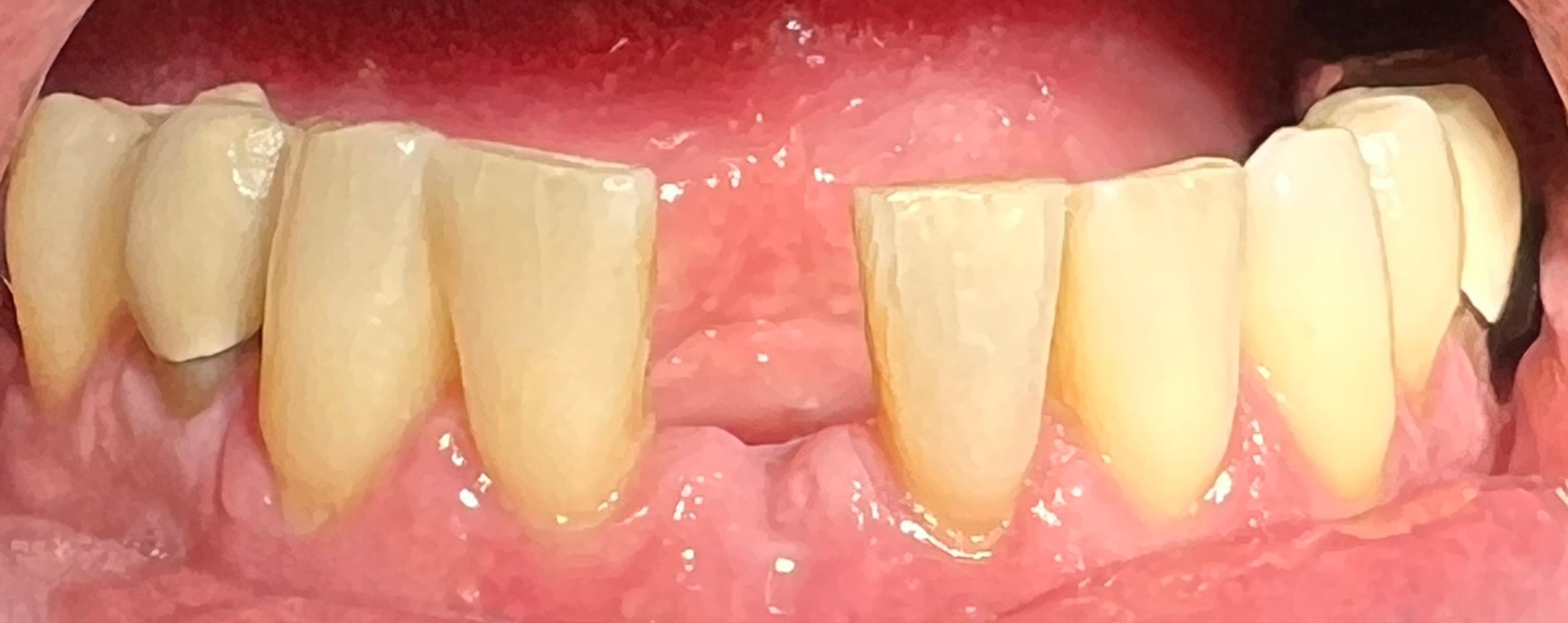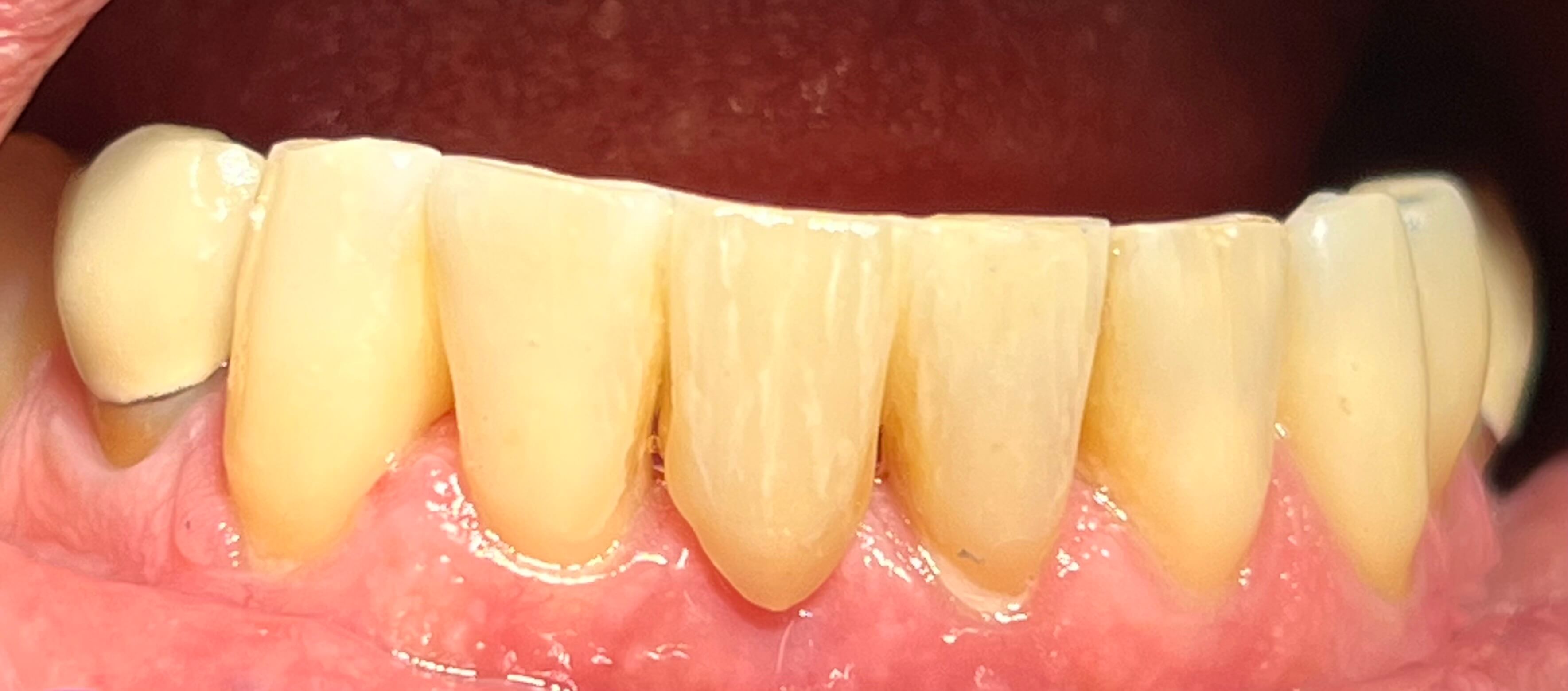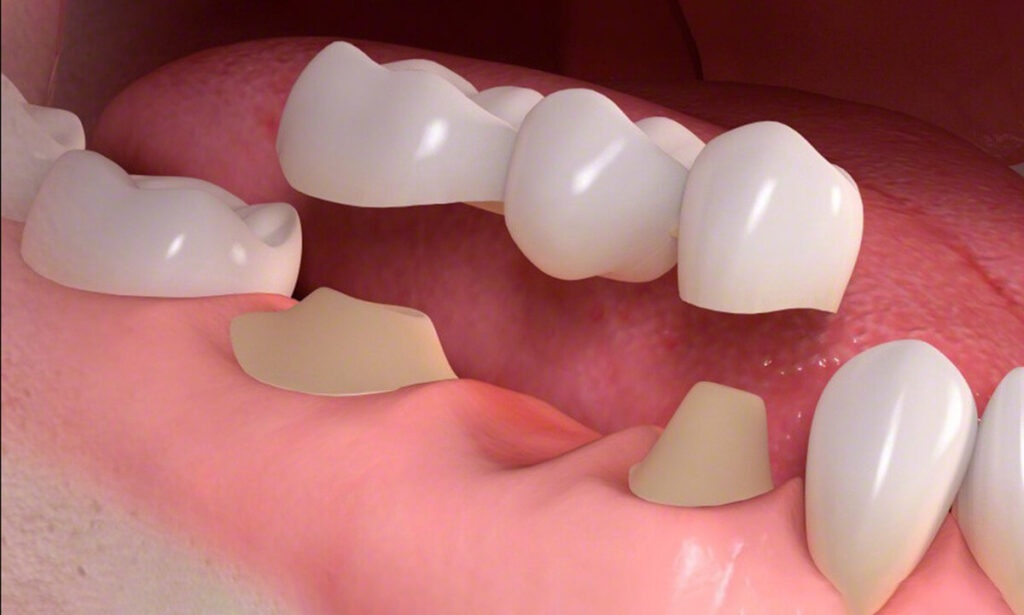What Are Dental Bridges?
A dental bridge, also known as a fixed prosthesis, is a common way to replace single or multiple missing teeth. There should be stable, healthy teeth on either side of the missing tooth or teeth to successfully prepare and deliver a dental bridge.Book Your Appointment
What Are Some Benefits Of A Dental Bridge?
- Restore your smile that may be looking bad due to the missing tooth.
- Restore the ability to chew properly and speak. A missing tooth can cause you discomfort while eating and chewing.
- Help you maintain the shape of the face.
- Help in distributing the bite forces evenly by replacing the missing teeth.
- Prevent the remaining teeth from being damaged and provide additional support.
What is the procedure for a dental bridge?
Bridge preparation
The abutment teeth are “shaved down” by approximately 1-1.5mm or more to accommodate the custom-made bridge retainers. The walls of the preparations must have the correct “draw” or parallelism.
Impression
Impression material is used to make an accurate mold of the teeth being treated, the surrounding teeth, and the bite. Impressions of all top and bottom teeth are made. This can also be accomplished digitally using a specialized scanner instead of impression material.
Formation of the dental bridge
The dental bridge is created from the impression of the teeth to ensure that it will be an excellent fit for your teeth.
This formation process, rooted in the precise field of prosthodontics, ensures that each bridge is tailored to provide a comfortable fit and a seamless look.
Cementation of the permanent bridge
Permanent dental bridges are cemented in place using a permanent adhesive. The bite is checked and adjusted as needed.
Dental bridges, like dental crowns, can be made of different materials, such as base metal alloy, gold alloy, porcelain, porcelain fused-to-metal, zirconia, porcelain-fused-to-zirconia.
Maintaining excellent oral hygiene is crucial after the placement of your dental bridge. This ensures the longevity of your bridge and the health of your surrounding teeth and gums.
Who Needs A Dental Bridge?
Gaps in your teeth can cause your other teeth to shift position and change your bite. These changes may lead to headaches, jaw pain, and a higher risk of periodontal disease. Speaking of, periodontists make use of bridges to maintain gum health.
Bridges serve several other purposes:
- They restore a healthy bite to make chewing easy.
- Bridges may improve your smile.
- They may maintain facial contours.
- May decrease damage to other teeth from an uneven bite.


Are There Different Types Of Dental Bridges?
Traditional Bridges
The traditional dental bridges use a crown that is directly positioned to replace the crown of the missing tooth. They are the most common type of dental implants used by dentists. The crowns used in the procedure are made of metal (gold or stainless steel) ceramic or porcelain.
Cantilever Bridge
These types of bridges are used when there is an adjacent tooth available next to the missing teeth. They are not in use anymore and are not recommended by dentists. They require too much force in the installation of the crown and may damage the other teeth.
Bonded Bridges
These bridges are made from porcelain and the gums are supported by a metal framework. They provide additional support to the teeth and are bonded by the next existing tooth.

Frequently Asked Questions
Who Can Benefit Most From A Dental Bridge?
If you are missing a tooth, but the surrounding structures are strong enough to support a bridge, then you can benefit the most. If you cannot support a bridge, you may need another solution.
Do I have To Replace Missing Teeth?
You should seriously consider it if you have the budget or the coverage. Gaps created from missing teeth can cause alignment issues, self-esteem issues, and more. Filling in the gap will alleviate a number of potential concerns.
